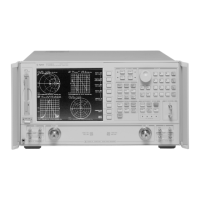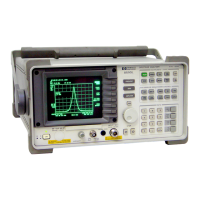Chapter 2 2-71
System Verification and Performance Tests
Agilent 8753ES System Verification and Performance Tests
38.Press .
39.Press . Write the mean value (which appears on the
analyzer’s display) in the column marked “Real Part” in the performance test record.
Note that the analyzer will display units as mU µU or nU, which are abbreviations for
10
−
3
units, 10
−
6
units, and 10
−
9
units, respectively.
40.Press . Write the mean value (which appears on the analyzer’s display) in
the column marked “Imaginary Part” in the performance test record. Note that the
analyzer will display units as mU µU or nU, which are abbreviations for 10
−
3
units, 10
−
6
units, and 10
−
9
units, respectively.
41.Repeat steps 38 through 40 for each setting of the step attenuator as written in the
performance test record.
42.For each pair of real and imaginary parts calculate the value given by the formula:
10 log
10
[(Real Part)
2
+ (Imaginary Part)
2
]. Write the result in the performance test
record in the “Test Port Measurement” column (column “G”).
43.Calculate the dynamic accuracy for each attenuator setting by using the formula:
|G − F| (the absolute value of the difference between the values in column “G” and
column “F”).
In Case of Difficulty
1. If the analyzer fails the test at all power levels, be sure you followed the recommended
attenuator settings as listed in the performance test record. Repeat this performance
test.
2. If both test port measured values are out of specifications:
a. Recalibrate the power meter.
b. Repeat this performance test.
3. If the analyzer fails either test port 2 or test port 1 dynamic accuracy at lower power
levels:
a. Perform the following adjustments: “IF Amplifier Correction Constants (Test 51)” on
page 3-14 and “ADC Offset Correction Constants (Test 52)” on page 3-15.
b. Repeat this performance test.
c. If it still fails, replace the A10 Digital IF assembly.
d. Repeat the two adjustment procedures mentioned in this step and then repeat this
performance test.
Format

